Phoenix dactylifera Date Palm Trees
Phoenix dactylifera (Arecaceae) is commonly known as Date Palm or “Khajoor” which is considered as the tree of divine providence and beliefs to provide livelihood to people. It is native to West Asia and North Africa but widely distributed in Punjab, Sindh, lower Baluchistan and N.W.F.P. It is a solitary tree of 30 meters in height and suckers producing offsets. The crown is large and open while its leaves are larger, glabrous, hard apex, spiny at ends and pinnae are strongly keeled. The lower leaflets transformed into spines, about 10-20 cm long with yellowish apex. The inflorescence is covered by hard and boat shaped bracts. The female inflorescence is about 90-120 cm long, glabrous and having numerous spike-lets. The main stalk of female inflorescence is about 45-75 cm long which carries green, rounded and distant flowers. The calyx of female flower is green and united at the base forming a cup-shaped structure while the petals are 2 times larger than the sepals. The male inflorescence is much smaller about 12-25 cm long, flat and glabrous. The main stalk of male inflorescence is about 60-90 cm long which carries white, sessile, sweet scented and much larger flowers than female flowers. The stamens of male flower are 6, about 4 mm long while anthers are flat with short filaments. Their sepals are 3 lobed, united and much smaller than petals. The fruit is berry, cylindrical in shape, edible, fleshy, single seeded, yellowish-brown or reddish brown in colour and about 2.5-5 cm in length. The seeds are stony, longitudinally grooved at one side and acute at the apex. An average well-manage palm will produced up to 60-70 kilos of dates per year.
Landscaping Ideas Of Phoenix dactylifera
The areas where the date palms are common are considered the areas of great economic importance. Date palms are mostly planted outdoors in gardens, streets, roadsides and fields etc.
Cultivars of Phoenix dactylifera in Pakistan
The date palms are important source of food since dawn of ancient history and Arabian date palms cultivars were imported from Basra (Iraq) by the British Indian Government and planted in Muzaffar Garh and Multan by the last century. These cultivars were Khadrawy, Halawy, Zahidi, Dayri and Sayer. Pakistan is the 7th largest producer of dates with a total production of about 557,279 million tons in 2011 from different cultivars. More than 325 cultivars of dates are grown in all provinces of Pakistan from which the most popular cultivars are Dhakki of Dera Ismail Khan, Aseel of Sindh and Begum Jangi of Baluchistan. The major date cultivation areas are Panjgur, Kech, Sukkur, Dera Ghazi Khan, Multan, Muzaffar Garh, Bahawalpur and Dera Ismail Khan. The dates from different cultivars may vary in shape, colour, size, texture, weight and softness therefore provide diversity for marketing purposes. The major importer countries of dates from Pakistan are India, Canada, UK, USA, Denmark, Malaysia and Germany.
How to propagate Phoenix dactylifera
Phoenix dactyliferais mostly propagated by seeds and suckers. The seeds are soaked for 24 hours in warm water before sowing. It takes usually 2-3 months to germinate and seeds remains viable for 8-15 months at room temperature. The suckers are pot up immediately into large containers and look after regularly until the plant is transfer to its permanent position.
How to take care of Phoenix dactylifera
- Phoenix dactylifera is tolerant to a wide range of well drained soils.
- It requires hot dry conditions for free fruiting.
- It prefers the areas where the annual temperature ranges between 26-45˚C, it can easily tolerate up to 10-52˚C.
- The water requirement of plant depends upon the underground water or provided by irrigation.
- It prefers the mean annual rainfall in the range of 200-300 mm, but tolerates up to 100-400 mm.
- It is tolerant to the salty soil, however the fruit quality might be affected.
Benefits and Uses of Phoenix dactylifera
- The leaves of Phoenix dactyliferaare used to make fans, baskets and mates.
- A fiber obtained from leaves are combined with other suitable material to make insulating boards.
- The fruits providehigh energy and eaten as food.
- Muslims break their fast each day by eating dates, during the month of Ramadan.
- They are the great source of vitamins (vitamin A & vitamin B) and minerals such as iron, phosphorus, calcium and potassium.
- The wood from tree is used to build homes, aircrafts and as fuel.
- The outer portion of wood is strong and highly resistant to termites.
- The development and survival of human race in hot and barren areas of the world was not feasible without the presence of date palm.



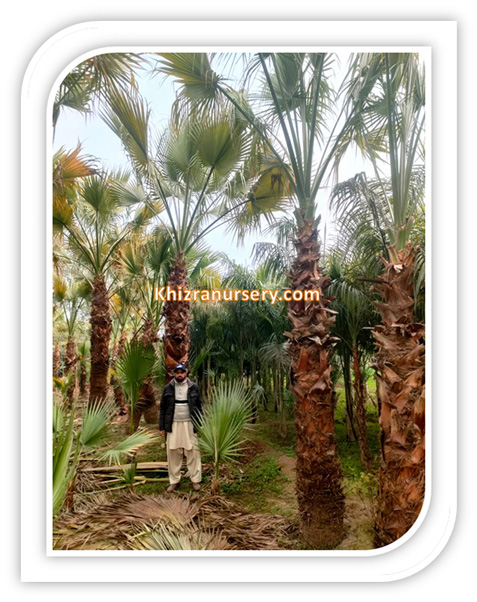
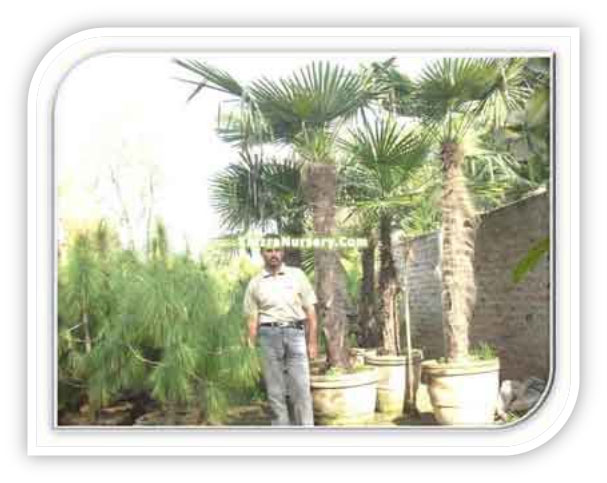
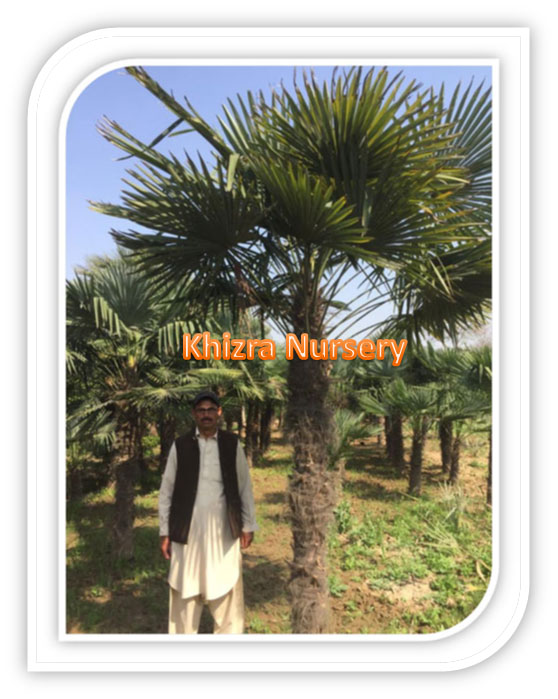

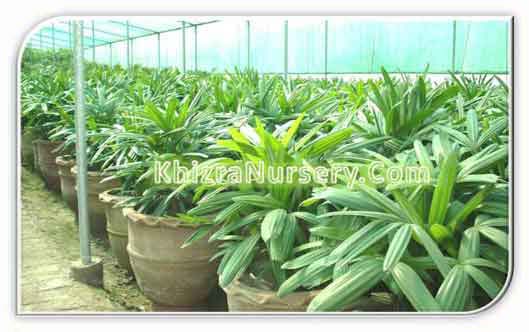
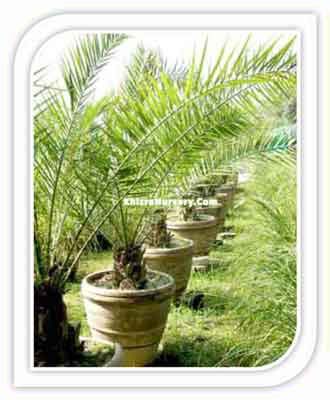
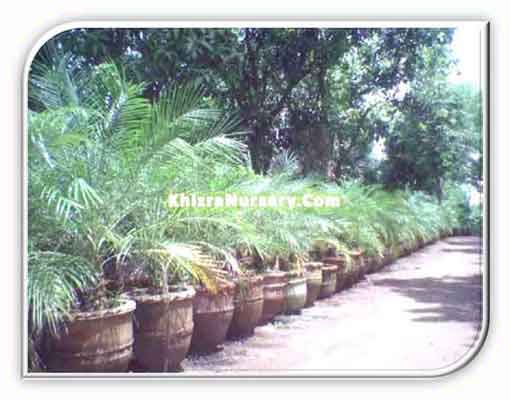


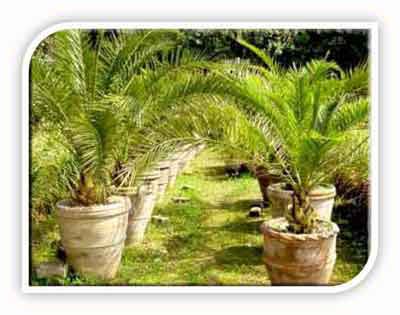
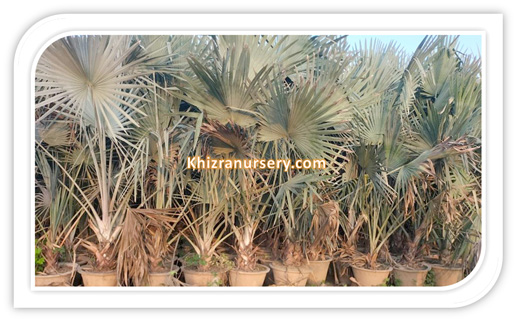

Reviews
There are no reviews yet.